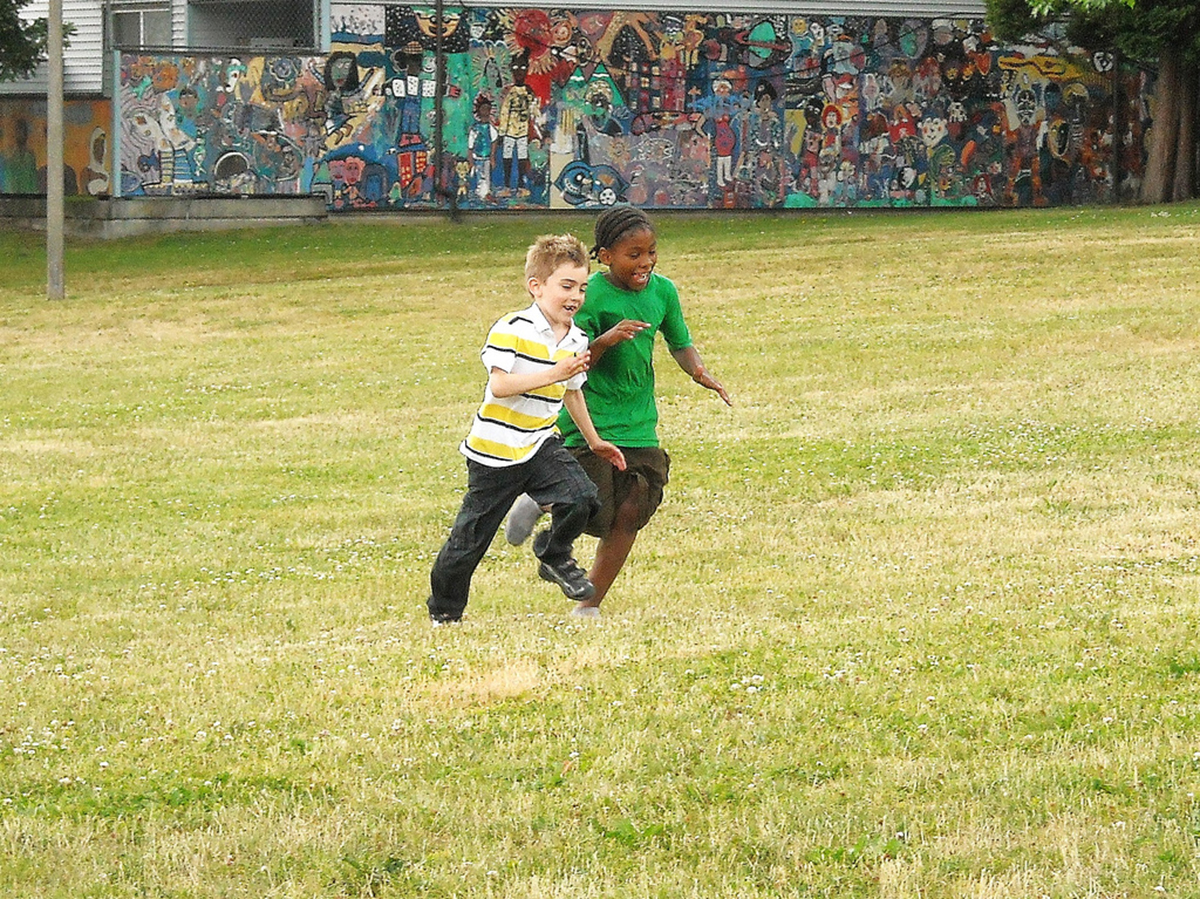Table of Contents
At the end of the school year, all 220 children were brought back to the university for testing. The doctors measured maximum O2 (oxygen) consumption (if you are pedaling a bike as hard as you can, how much oxygen do you breathe every minute) as a surrogate for physical fitness. They gave all of the children a test called the P3-ERP to measure electrical activity in their brains. And they gave all of the children tests of executive function requiring the ability to inhibit premature responses to questions and a flexibility task, measuring their ability to "think outside the box."

Better Brain Development, Less Body Fat
In addition to these three tests, the researchers took standard physical measurements.
They also had better physical fitness, as measured by the O2 consumption test, more brain activity, and better scores on the tests of "attentional inhibition," the ability to block out extraneous information while performing a task, and "cognitive flexibility," the ability to toggle between two tasks as needed during a test exercise.
The children who had attended the most exercise sessions had the greatest improvements in their scores, in both physical fitness and executive function. The children who were not in the after-school program also experienced brain development, but not as much as the children who got 2 hours of exercise nearly every school day.
Physical Education Makes Success In Reading And Math Possible
Dr. Charles Hillman, a professor of kinesiology and community health at the University of Illinois who led the study, says that the bottom line of their findings is that kids need to be physically active for the sake of their brains as well as for their physical fitness. Fancy equipment is not needed, although the participation of a physical education instructor is a good idea. Schools all over the United States that are cutting back on physical education to save money are making a poor choice, Hillman says, because children do better in reading and math when they get at least an hour of physical play every day.
But the physical activity that helps young brains develop does has to be performed on an almost daily basis, with an emphasis on aerobic exercise rather than resistance training or muscle coordination.
See Also: Quit Letting Your Stress Stress Your Kids
It's great to have an after-school program for your children, but what if you don't? Here are some suggestions.
- Encourage outdoor play every day. Physical play should come first, before video games, Internet, and TV. Make television viewing a family activity. Children will be less likely to be exposed to inappropriate programs, and more likely to develop broader interests.
- There's an app to help parents make sure their children get enough play. TapTrak can help parents keep track of how long children were on the playground, how long they played video games or browsed online, how long they spent on computer games, and how long they spent on their homework.
- Don't schedule every minute. Children at this age need to structure their own play time--and that doesn't mean they need to make little charts to hang in their bedrooms. Spontaneous play helps brains grow at this age. Let kids be kids, but let them be kids on the playground at least an hour a day.
- Hillman CH, Pontifex MB, Castelli DM, Khan NA, Raine LB, Scudder MR, Drollette ES, Moore RD, Wu CT, Kamijo K. Effects of the FITKids Randomized Controlled Trial on Executive Control and Brain Function. Pediatrics. 2014 Oct
- 134(4):e1063-71. doi: 10.1542/peds.2013-3219.PMID: 2526642.
- Reynolds, Gretchen. How Exercise Can Boost Young Brains. New York Times. 8 October 2014.
- Mind map by SteadyHealth.com
- Photo courtesy of KWDesigns via Flickr: www.flickr.com/photos/kwdesigns/3638332859


Your thoughts on this